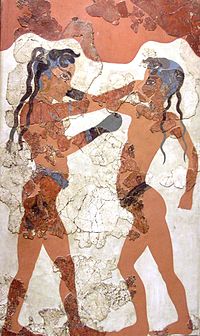
Martial arts are codified systems and traditions of combat practices, which are practiced for a variety of reasons: self-defense, competition, physical health and fitness, entertainment, as well as mental, physical, and spiritual development.
Although the term martial art has become heavily associated with the fighting arts of eastern Asia, it was originally used in regard to the combat systems of Europe as early as the 1550s. An English fencing manual of 1639 used the term in reference specifically to the "Science and Art" of swordplay. The term is ultimately derived from Latin, and means "arts of Mars," where Mars is the Roman god of war. Some authors, most notably Donn F. Draeger, have argued that fighting arts or fighting systems would be more appropriate on the basis that many martial arts were never martial in the sense of being used or created by professional warriors.
There are a large number of distinct styles and schools of martial arts. Sometimes, schools or styles are introduced by individual teachers or masters, or as a brand name by a specific gym. Martial arts can be grouped by type or focus, or alternatively by regional origin. This article focuses on the latter grouping.
For hybrid martial arts, as they originated from the late 19th century and especially after 1950, it may be impossible to identify unique or predominant regional origins. It is not trivial to distinguish "traditional" from "modern" martial arts. Chronology isn't the decisive criterion, as, for example, "traditional taekwondo" was developed in the 1950s, while the "modern"hybrid martial art of Bartitsu was developed in ca. 1900.
A large portion of traditional martial arts can be categorized as folk wrestling (see the separate article), although in some cases a folk wrestling style and a modern combat sport may overlap or become indistinguishable from each other once the sport has been regulated.
(source: wikipedia)
Although the term martial art has become heavily associated with the fighting arts of eastern Asia, it was originally used in regard to the combat systems of Europe as early as the 1550s. An English fencing manual of 1639 used the term in reference specifically to the "Science and Art" of swordplay. The term is ultimately derived from Latin, and means "arts of Mars," where Mars is the Roman god of war. Some authors, most notably Donn F. Draeger, have argued that fighting arts or fighting systems would be more appropriate on the basis that many martial arts were never martial in the sense of being used or created by professional warriors.
There are a large number of distinct styles and schools of martial arts. Sometimes, schools or styles are introduced by individual teachers or masters, or as a brand name by a specific gym. Martial arts can be grouped by type or focus, or alternatively by regional origin. This article focuses on the latter grouping.
For hybrid martial arts, as they originated from the late 19th century and especially after 1950, it may be impossible to identify unique or predominant regional origins. It is not trivial to distinguish "traditional" from "modern" martial arts. Chronology isn't the decisive criterion, as, for example, "traditional taekwondo" was developed in the 1950s, while the "modern"hybrid martial art of Bartitsu was developed in ca. 1900.
A large portion of traditional martial arts can be categorized as folk wrestling (see the separate article), although in some cases a folk wrestling style and a modern combat sport may overlap or become indistinguishable from each other once the sport has been regulated.
(source: wikipedia)